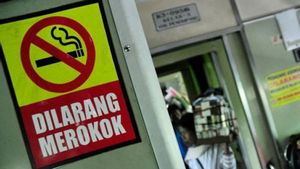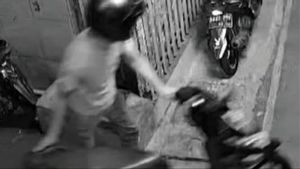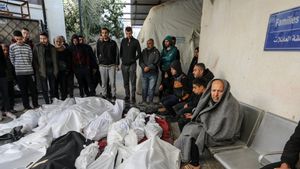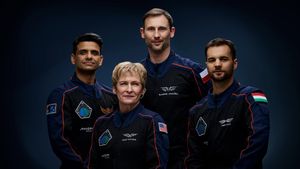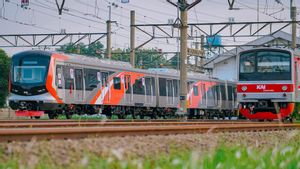JAKARTA - Minister of Social Affairs Tri Rismaharini continues to strive so that social assistance (bansos) provided by the government reaches people who really need it. Including collecting data on social assistance recipients from four directorate generals in his ministry and wanting to monitor their homes via satellite.
When occupying the position of Minister of Social Affairs replacing Juliari Batubara who was caught in the bribery case of social assistance (bansos) COVID-19, Risma admitted that she immediately requested an audit from a number of institutions including the Corruption Eradication Commission (KPK) in her ministry. This is so that he knows what needs to be improved, especially regarding the provision of assistance.
"At the beginning, frankly, I didn't know the conditions at the Ministry of Social Affairs. From there (because, ed) I used to ask for an audit every time I went in and out. Why, I wanted to know what had to be improved and what were the shortcomings," said Risma at the event. discussion aired on the KPK RI YouTube, Thursday, August 19.
From the various audits carried out, Risma finally found out that the problems in the provision of social assistance (bansos) were related to recipient data. So, he immediately moved to carry out improvements by integrating data from the four directorates general in his ministry.
"So initially there were four data. DTKS itself, data on non-cash food assistance or people who know basic necessities, then there is data on cash assistance, and data on PKH," said the former Surabaya Mayor.
From this unification, Risma said there were 193 million recipient data, which was then followed by matching the data with the Population Identification Number (NIK). This was done because he received input from the KPK to be matched with population data and the result was that the recipients of the social assistance were reduced to 155 million.
This data matching, said Risma, also revealed that there were multiple recipients of assistance, which means that one person can receive various aids even though this is not allowed. So, from all these findings, the Ministry of Social Affairs was finally able to put to sleep around 21 million data on social assistance recipients.
"We map according to the rules, some are allowed to be doubled, so PKH with basic necessities is allowed, concurrently is allowed. But there are things that can't be like BST, it can't be doubled," said the chairman of the PDI-P DPP.
The active role of the local government in registering the recipients of social assistance is neededRisma admitted that currently there are still many poor people in the country who do not receive social assistance. However, he assessed that this happened because the local government did not report the latest data to the center.
"That the proposed data on who the recipient is from the (government, red) area, then we return the authority to the region and ask the region to fix it," he said.
He said that from January to April 2021, the Ministry of Social Affairs submitted data on people who received assistance to the regional government. This is in accordance with Law No. 13 of 2011.
The local government, said Risma, was given this authority because it was considered to be more aware of the condition of the people in its area. So, if there are poor people who do not receive social assistance, it is not the fault of the central government.
Furthermore, he said that the poor could be given social assistance in the delivery period of the following month. Local governments can update the data every month to ensure that social assistance is received by those in need.
"Every month there is data on changes from the regions, there are regional data, for example death or moving, it is reported by the region. So why do we routinely evaluate in the third week of every month, for improvement in the following month," said Risma.
Efforts to ensure that social assistance is right on targetVarious steps to ensure that social assistance reaches the recipients and are not misused, continue to be carried out by Risma. In addition to matching the data with the NIK, in the future the Ministry of Social Affairs (Kemensos) will cooperate with the National Institute of Aeronautics and Space to check the condition of the houses receiving social assistance via satellite.
"We will know later if the position of the house is with its geospatial data, satellite image data. So we will know the position of the house," he said.
With the use of satellites like this, the recipient of the social assistance that turns out to be a big house can be identified and the withdrawal of assistance can be carried out.
"So that one day if he says he is still poor, it turns out that his house is getting bigger. We can compare that. So, in the future, these inputs can be maximized," said Risma.
Monitoring the houses of recipients of social assistance is actually not a new thing because this has been done with the help of PT Pos Indonesia. The former mayor of Surabaya said that postmen who usually send money to the homes of beneficiaries will be asked to take photos.
The next step, the Ministry of Social Affairs will match the use of electricity for social assistance recipients. This is expected to make the provision of assistance more targeted and prevent people in luxury or large homes from receiving social assistance.
"It would be really good if we also looked at, for example, in the future, the use of electricity. We will know more," said Risma.
According to him, people who really need social assistance usually do not consume large amounts of electricity. "So how can he accept that the house assistance, for example the house is 10 thousand watts, turns out to receive assistance, and this is something like that," he concluded.
The English, Chinese, Japanese, Arabic, and French versions are automatically generated by the AI. So there may still be inaccuracies in translating, please always see Indonesian as our main language. (system supported by DigitalSiber.id)



